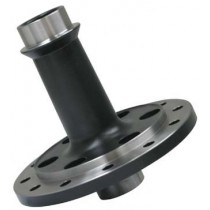You may have heard the terms “locker” and “limited slip” thrown around pretty loosely in the 4x4 world, but what is the difference between them?
The Difference Between Locking and Limited Slip Differentials
You may have heard the terms “locker” and “limited slip” thrown around pretty loosely in the 4x4 world, but what is the difference between them? Both exist to solve the same problem: one wheel spinning wildly in the air while the wheel that actually has weight and traction sits useless on the ground. This is the conundrum of the standard open differential that sits in a majority of regular cars on the road. However, vehicles that were made to go off-road had to solve this issue, and to do so they cracked open the differential itself.
Limited Slip-Differential: The purpose of this differential is to crack down on the tendency of the open differential to allow the wheel with the most traction to sit without spinning. Instead, it alters the power split so that the wheel with the least amount of traction gets less power while the wheel with the most amount of traction gets more power. They are most ideal for daily drivers which will occasionally have to deal with mud, snow, and gravel where a locking differential could be a liability.
Locking Differential: As the name implies, this is a differential which can be ‘locked’ in place so that both wheels are spinning with the same amount of torque. For heavy-duty off-roading, this is ideal to get through long stretches of deep mud or snow. The upside is that it provides more torque to both wheels, resulting in a system even more capable of getting out of sticky situations than a limited-slip. The downside is that it isn’t really suitable for a daily driver because it limits the steering capabilities and ride comfort of said vehicle, and also places a great deal of stress on the axle shafts; in certain situations a locking differential can actually snap off an axle shaft.
While both differentials exist to solve the same problem, both choose to do so in their own unique way. Neither is better than the other—they just have their own strengths and weaknesses. It’s up to you to decide which is the choice for your off-roading rig.






